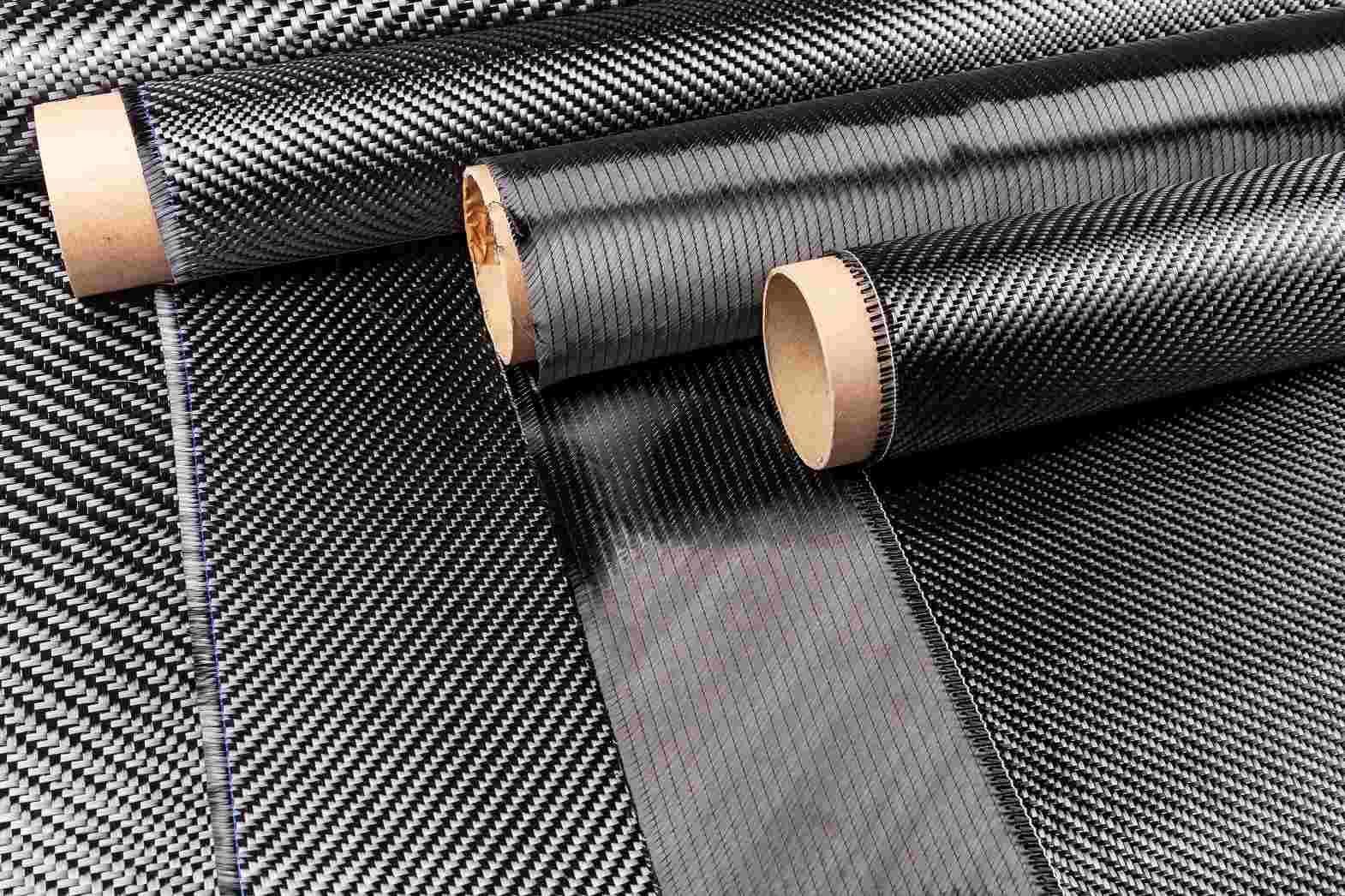Most of the machinery installed is one of its kinds in India. It's not possible for every small or medium-scale industry or for an entrepreneur to have exposure to the latest and the best technology and its applications available in the market. We will discuss some of the carbon specifications developed.
Carbon Fibre Fabric Construction particulars:
3K x 3K Carbon Fiber Fabric Manufacturing Process:
Carbon fiber fabric can be woven with different weaves, taking into consideration the end use. In this article, we will discuss the Carbon 8-end Satin fabric weaving. Here are the specifications for 8-end Satin Carbon Fiber Fabric:
Warp: 3K Carbon (1800 Denier)
Weft: 3K Carbon (1800 Denier)
Ends per Inch: 24
Picks Per Inch: 24
Reed Space: 40 Inches
Weave: Eight-end Satin
Selvedge: Plain
Calculated GSM: 377.94
Total Ends: 960
WEAVE:
METHOD OF CARBON FIBER FABRIC WEAVING:
1) SAHM winding machine- model 880096/1
We have taken 45 Kgs of 3 K carbon fiber having 01 Kg each package. According to GSM of fabric we have estimated 960 small packages having 118 meters length. Initially we have wounded the 1000 Denier Polyester to prevent wastage of expensive carbon fibre at creel to loom passage.
We have kept the Rewinding Speed 50 meters per minute and 3 K Carbon Fiber winding tension set at 2 Bar. 960 packages were transferred to Texmer creel safely by applying tape on tail end of each package. Package Holder tension was set at position 01.
2). Texmer direct creel type TS 1000
We have creel capacity 1008 ends on Texmer Creel. We have creeled the carbon fiber packages.
3). Comber Board:
All ends were drawn through eyelets of Comber board (28 x 18) (28 x 18) = 1008.
We have taken precaution from crossing by drawing all ends parallel among each other.
Then warp sheet was taken forward through back reed and inserted in guide rollers. Weaving with direct creel, ends were passed through passage around drum to whip roller.
4). Warp taken on loom:
Eight Heald Shafts with special Heald wires suitable for carbon were prepared. Each Heald frame contains 120 Heald wires. Two separate shafts were taken in front for selvedge ends. We have taken 3000 Denier black polyester for selvedge in two dents on reed at both the extremity for firm binding.
5).Carbon weaving on 190 cm rigid rapier loom:
After pulling warp ends forward, machine component settings were completed. Special selvedge cutter applied for uninterrupted selvedge cutting with minimum fringe length to avoid waste. Carbon fabric was wound on paper tube on batching device. Material handling of woven carbon needs much care in safe packing and transportation.
Conclusion:
The end of metal age is here the age of carbon fibre composites has just begun. For carbon weaving special attachments and waste saving devices are being used. Heat setting device is required to manufacture unidirectional carbon fibre fabrics. Selection of weave like Plain, Twill, Satin, etc. depends upon end use of output. Furthermore, the versatility of the loom is an important factor so that the majority of the fabrics can be woven as per the ever-changing requirement and trend of the market. Carbon weaving operators must wear protective cloths, goggles, glasses, hand gloves for protection. Overhead chimney above the loom must be installed to absorb fluffs generated which are injurious to human health.
References:
1. Carbon Fiber-Reinforced Polymer (Frederic P. Miller, John McBrewster, Agnes F.Vandome )
2. Update on Carbon Fibre (English) Pratima Bajpai
3. Carbon Art (Arno C. Schmetjen)
4. Lindauerdornier.com
5. Texmer.de
6. Fraunhofer.de
Mr. Pradeep Kulshrestha is an experienced technical professional in the field of Textile Operations Management carrying more than 30 years of rich experience in nine esteemed companies in India and abroad. At present he is working for continuous development in the field of technical textiles (Glass, Aramid and, Carbon fibre fabrics range etc) and composites in ATIRA Incubation Centre as Head of the department).
The author is grateful to Dr. A.K.Sharma, Director - ATIRA for giving the opportunity to publish this paper based on continuous efforts toward Carbon fibre fabric World Class manufacturing.







Comments